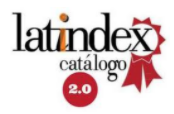The Subject and The Time
Tyrants Children
DOI:
https://doi.org/10.35305/rpu.v0i6.130Keywords:
Tyrants Children , Subjective Constitution , Body, Time , SymptomsAbstract
Contemporary Symptoms is an interesting way to locate how the particula-rity of the time delimits a position in the clinic, which is not without the analyst’s ethics in the face of the various ways of presenting something that ails.The route of this work focuses on the current symptoms typical of childhood, cutting the gaze on the child called «Tyrant», with the intention of opening questions and possible ways of approach. The theme leads to an investigation on the subjective constitution introducing questions about a jouissance characterized as narcissistic, from where the subjects respond with the body rather than with their symbolic universe. The ways in which it can manifest itself oscillate between abulia and hyperactivity, in which the body is put into play, even leading to agitation or great instinctual excitement.Delimiting an area where the child, or children, are located and even named with excessi-ve names, is of interest as an opportunity to make room for new symptoms in the analyti-cal device, and to provide possible guidelines in the direction of the cure.
Downloads
References
Arruda Grostein, S. (2014) “Niños amos”. En: Seldes, R. (2014) Hablar con el cuerpo, la crisis de las normas y la agitación de lo real. Volumen VI Enapol, Buenos Aires: Grama Edicio-nes.
Brodsky, G. (2010) Neutralidad. Escuela de Orientación Lacaniana. Recuperado de: http://www.eol.org.ar/template.asp?Sec=jornadas&SubSec=jornadas_eol&File=jornadas_eol/012/textos/brodsky.html
Fryd, A. (2014a) “El niño amo”. En: Seldes, R. (2014) Hablar con el cuerpo, la crisis de las normas y la agitación de lo real. Volumen VI. Enapol. Buenos Aires: Grama Ediciones.
Fryd, A. (2013) Los niños amos. Enapol. Boletín Enapol Nº 59. Recuperado de: http://www.enapol.com/Boletines/059.pdf
Fryd, A. (2009) “Amos del Amo”. En: Psicoanálisis con Niños y Adolescentes 2, Buenos Aires: Grama Ediciones.
Fryd, A. (2009) La respuesta a un discurso de violencia-Aperiódico Psicoanalítico Nº 18: Violencia.
Fryd, A. (2014) Nenes convertidos en tiranos Diario Página12. 07 de junio de 2014. Recuperado de: https://www.pagina12.com.ar/diario/suplementos/rosario/21-44726-2014-07-06.html
Goldemberg, M. (2014) El malestar del Otro.Disponible en: http://www.lacan.com/goldenberg.htm
Lacan, J. (1938) “Los complejos fami-liares en la formación del individuo”. Otros escritos. Bueno Aires: Editorial Paidós (2016).
Lacan, J. (1968) “Alocución sobre las psi-cosis del niño”. Otros escritos. Buenos Aires: Editorial Paidós (2016)
Lacan, J. (1969) “Nota sobre el niño”. Otros escritos. Buenos Aires: Editorial Paidós (2016)
.Lacan, J. (1969-1970) Seminario 17. El reverso del psicoanálisis. Buenos Aires: Editorial Paidós (2009).
Laurent, E. (2007) “Las nuevas inscrip-ciones del sufrimiento en el niño”. En: Psicoanálisis con niños y adolescentes. Buenos Aires: Grama Ediciones.
Laurent, E. (2018) El niño y su familia. Buenos Aires: Editorial Colección Diva.
Miller, J.A. (2003) Nota sobre la vergüen-za. Mediodicho 26. Pág.6. Publicación de la EOL Sección Córdoba
Miller, J.A. (1994) Lo real y el sentido. Buenos Aires: Editorial Colección Diva
Miller, J.A. (2014). Presentación del Tema del IX Congreso de la AMP. Recupe-rado de: http://www.congresamp2014.com/es/template.php?file=Textos/Pre-sentation-du-theme_Jacques-Alain-Mi-ller.html
Pelliza, M. (2014) “Niños Amos”. En: Sedles, R. (2014) Hablar con el cuer-po. Volumen del VI Enapol. Buenos Aires: Grama Ediciones.
Downloads
Published
How to Cite
Issue
Section
License
Copyright (c) 2022 Natalia Savio, Laura Schiavetta

This work is licensed under a Creative Commons Attribution-NonCommercial-ShareAlike 4.0 International License.








 Esta obra está bajo una
Esta obra está bajo una 





